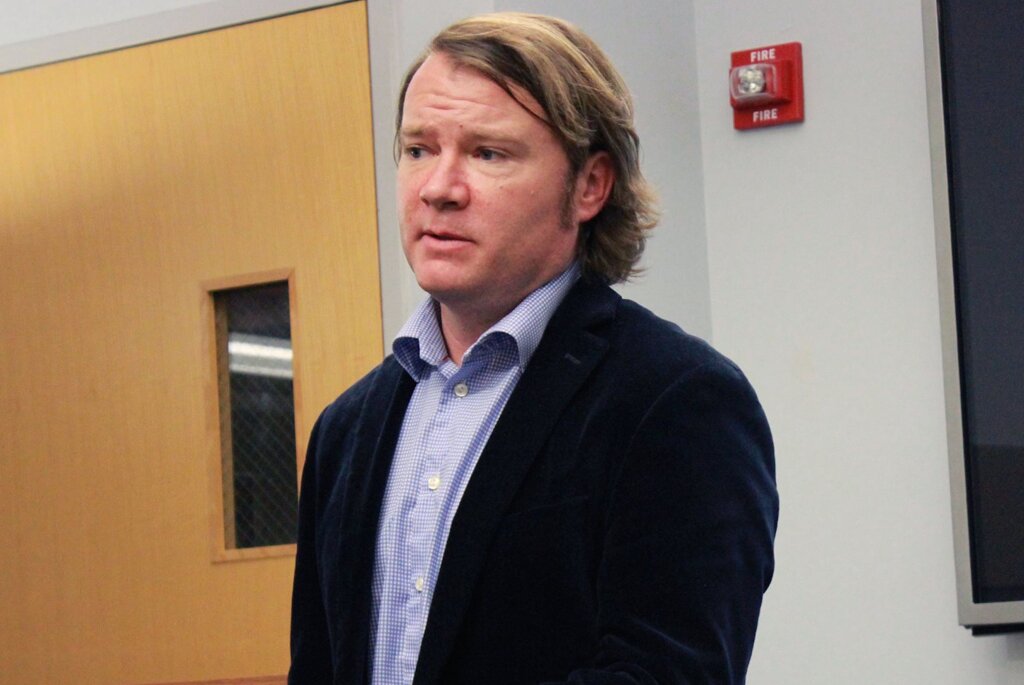Watch the video of Panel 1 here
Watch the video of Panel 2 here
Watch the video of Panel 3 here
On February 26, 2015, the NYU Jordan Center for the Advanced Study of Russia hosted a two-day workshop on the topic of racial categorizations in Russia. The event, titled Russia’s Races: Meanings and Practices of Race in Imperial Russia and the Soviet Union and convened by David Rainbow, a postdoctoral research fellow at Columbia University’s Harriman Institute for Russian, Eurasian, and East European Studies, was co-sponsored by NYU Department of History, Global Research Initiatives (NYU Provost), the Harriman Institute and the Humanities Initiative (NYU).
The workshop consisted of a series of panels that igiought together experts in Russian studies and specialists from other fields, in an attempt to put discussions surrounding race in Russian history in a global perspective through a comparative approach, as explained by Jordan Center Director Yanni Kotsonis. Upon giving his introductory speech, Rainbow highlighted the importance of trying to “extract from the specifics the conceptual significance of the topic”, particularly in light of the often varied and contradictory ways Russia has articulated concepts of nationality, ethnicity and race. The conversations were based on a series of papers, submitted and circulated before the workshop. “Several of the papers that we will be discussing explain in great detail the reasons why this conversation hasn’t happened [before], or is just beginning to happen,” Rainbow said, noting how discussing the difficulties hindering the process was among the goals of the event.
Panel 1 | In European Context
The first panel invited the audience to join a discussion on the conceptualization of race and its relationship with European approaches to race and racial categorizations. Karl Hall from the Central European University in Budapest illustrated the main themes of his paper “‘I know You Won’t Be Satisfied With My Description of Chuvash Faces, But What to Do If I Was Not Born a Diligent Student of Lavater, Camper, Blumenbach, or Virey?’: Entangled Concepts of Race in the Russian Empire before 1859,” while Vera Tolz from the University of Manchester presented her research on “Studying Race in Imperial Russia: Issues, Myths and Misconceptions.” The panel also saw the participation of discussant Herrick Chapman, Associate Professor of History at NYU, who contributed his experience investigating the topic of race in a French context.
The conversation started with Hall’s observation that discourses and notions on race were in fact widely available from the late 18th century through the use of words such as paroda (breeding stock) and plemya (tribe), which he equates in meaning to rasa (race), a word of later appearance. He warned, however, that these pre-Darwinian discourses should not be read from anthropological point of view. “There is no nature/culture distinction that is firmly in place,” he said.
Subsequently, Tolz elaborated on the use of racial concepts in imperial Russia, which she described in terms of “complete terminological disarray.” Tolz also remarked how while nature and culture are perceived to be very closely intertwined, the link between the two is not necessarily clear. In the 19th century concepts of paroda, plemya and rasa were not used to establish hierarchies, but culture and civilizations did perform this function. Meanwhile, narodnost’ (nationhood) and natsionalnost’ (nationality) were usually used to account for diversity and in some instances (e.g. in texts produced by the Slavophiles) were not clearly separated from paroda, plemya and rasa. Along these lines Tolz also provided a useful framework to keep in mind when discussing ethnic cleansing carried out by the imperial government. She explained how the military analysts called to carry out the categorization would regard the characteristics they assigned to different groups – which today we would regard as stereotypes – as attributes of their national character, which in turn they considered to be a scientific term.
Referring to the fact that the conceptualization of race in France arrived later than elsewhere in Europe, Chapman pointed out the existence of a certain kinship with Russia. The French revolution and republican tradition, with their opposition to privilege, prevented France from making claims against specific groups, but also delayed the start of a debate on race – something that creates a certain kinship with the Russian case. Chapman also drew the attention to two challenges faced when discussing meanings of race in Russia in an academic environment: “the temptation to further accentuate the Russian exceptionalism” and to project the categories in use in the country one is writing from onto the Russian case.
Following the presentation, a discussion with the audience touched upon a wide variety of themes, from the question of essentialism in discussions of race to the racialization of class categories in a Soviet context.
Panel 2 | The Limits of Universalism
The second panel discussed race and nationality in political discourse as potentially “positive categories” – categories, which would allow minority groups to strengthen their identity and be recognized in the sphere of governance.
For example, Marina Mogilner from the University of Illinois, Chicago, presented her paper entitled “The Science of ‘Jewish Race’ in the Russian Empire,” which focused on various Jewish medical societies that considered themselves as part of the scholarly community, but could not participate in the official Academy of Sciences. Some of them used the concept of race not in order to respond to anti-Semitic agenda, but with their own agenda in mind: it helped them to overcome their own deficiencies as a community. In this case, race is used as a “normalizing concept” that allows for minority groups to be included in larger society and subsequently received certain benefits and rights.
The paper by Brooklyn College’s Brigid O’Keeffe, “How to be a (Soviet) Gypsy: Roma, ‘National Character,’ and Socialist Transformation in the Soviet Union,” addressed the paradoxical dynamic of the Roma community in the 1920s who mobilized national policy and made it work for their own political and social advancement. The Soviet policy of Nationalities emphasized the ethnic backwardness of certain groups in order to simultaneously emphasize the necessity for transforming these communities and integrating them into the Soviet project. Therefore, in order for the Roma to be recognized as a nationality in new Soviet policy, they had to continue to emphasize the traditional stereotypes of their community – that of illiterates, thieves, swindlers, and wanderers. O’Keeffe observed that in this dynamic, the discussion of race was not a factor but for the purposes of the panel, she proposed to look at the above-mentioned dynamic as a form a persistent essentialism in the name of the new policy.
The panel’s discussant, Eric Weitz from CCNY, highlighted that both papers allude to a tension that arises between race being considered as a marker of an inherent human characteristic and the belief in the malleability of human beings. For example, in the 20th century, when race’s definition is established in biological terms, the idea of human transformation and malleability gradually decreases. But is it possible to imagine a racial discourse that also allows for human transformation? How would that transformation take place?
The ensuing discussion touched upon a wide variety of subjects, including the tension between racial discourse and nationality, as well as the problematic of nationality for groups like Jews and Roma that are not tied to a particular territory nor language. Also, the discussion continued the debate on concepts of essentialization and backwardness as connected to social classes rather than racial groups (i.e. peasants in Russia).
Panel 3 | Empires Mixing
In the third panel event organizer Rainbow illustrated the main points of his paper “’In Us and in Our Children’: Race Mixing and the Siberian Colonial Critique.” His intervention was followed by a presentation by Adrienne Edgar from UC Santa Barbara on “Children of Mixed Marriage in Soviet Central Asia: Dilemmas of Identity and Belonging.” Barbara Weinstein of the NYU Department of History was called to join as a discussant.
Rainbow drew attention to the transformative potential of race in the Russian context through the experience of the Siberian regionalists, a 19th century group advocating autonomy for Siberia through the mobilization of race. Rainbow argued that in order to obtain those preconditions to autonomy represented by development and progress, Siberian intellectuals used the idea of racial degeneration – Russian colonizers “going native” (inorodtsy) – as a lever to get the Russian state to pay attention to the region. Subsequently, the regionalists’ view of race changed, following the achievement of moderate levels of development and progress in Siberia. The concept of miscegenation was then seen “a productive force,” with the new resulting “racial mixed type” becoming the most suited to govern the region. The view on race shifted again at the beginning of the 20th century, when a new wave of resettlers threatened the balance. With too many Russians coming to the region, the identity of the Sibiriak was in danger. In response to that, race was turned into a supranational entity.
Edgar introduced her work explaining how, when she decided to focus on interethnic marriage in Soviet Central Asia, she did not expect to bring race discourses into her research, but was later drawn to it. “I started to figure out that it was in fact about race at least to some extent, and if not about race then about some kind of race-like processes,” she said. By studying Soviet scholarship on the topic, for example, she discovered underlying racial subtexts, fuelled by the lack of clear delineation between biological, social, historical and cultural notion of human identity groups. In that context, Edgar stressed, intermarriage was seen as a way to dissolve the ethnos towards a rapprochement of nationalities in the Soviet Union.
Weinstein, an expert on Brazil, observed how both papers dealt with the challenges of an interethnic empire and how regional national identities get racialized. She described the tendency to view those identities as innate and “lending themselves to hierarchical notions of differences” – two aspects she sees as a precondition to discourses on race. She also highlighted parallels with the idea of race mixing as leading to degeneration in the northern Brazilian region in the late 19th century, wondering whether the achieved emancipation by slaves in Brazil and serfs in Russia could have informed the conversation by revealing a “generalized anxiety about the human capital of a society.” In her interpretation, however, the Soviet case appears to hold a more “optimistic” view on interracial mixing than the Brazilian case. Additionally, Weinstein noted the existing tensions and contradictions between the official celebration of mixed nationalities and the sense that identities other than Russian were inferior.
The final part of the event saw the presenters tackle questions such as the possibility of different levels of racial intermixing, the use of terminology and the role played by gender.
Check out our report from Day 2
Additional reporting by Anastassia Kostriukova



